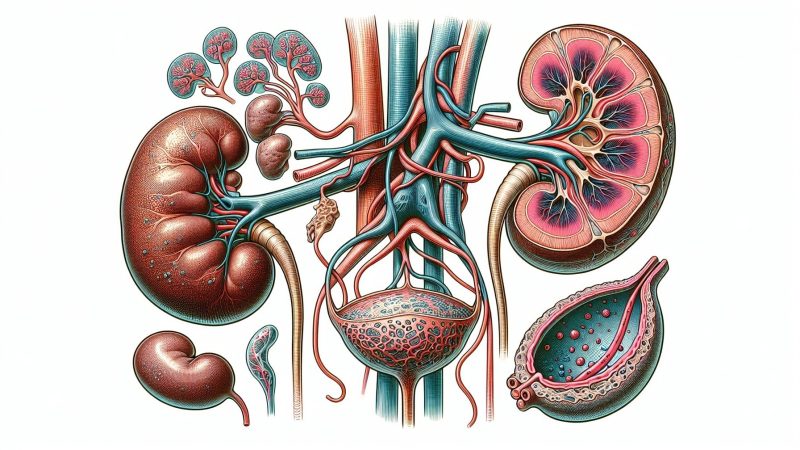A new frontier for non-invasive genitourinary disease detection

RNA originating from genitourinary tract tissues is resolvable at cell-type resolution in human urine.
Study: Deconvolution of Human Urine across the Transcriptome and Metabolome. Image Credit: Shutterstock AI / Shutterstock.com
Many diseases affecting the genitourinary tract are difficult to diagnose early without a tissue biopsy; thus, there remains an urgent need for non-invasive assessment of these tissues. A recent study published in Clinical Chemistry explores the potential diagnostic utility of transcriptomic and metabolic signals in the genitourinary system.
Current approaches for genitourinary disease diagnosis
Urinalysis, while useful for the diagnosis of certain health conditions, lacks the high resolution needed to diagnose various genitourinary diseases conclusively. If diagnosed early, renal carcinoma, which arises in the renal tubular epithelium, has a high survival rate; however, the diagnosis of this disease typically involves renal biopsy.
Biopsy procedures are associated with numerous limitations, including their invasiveness and risks for the patient undergoing the procedure. Furthermore, the molecular biological assays that are often used to analyze biopsy tissues are limited in their capacity for early detection.
Cell-free ribonucleic acid (cfRNA) liquid biopsy has emerged as a promising method that can measure messenger RNA (mRNA) levels in the blood to reflect tissue and cell-specific changes in gene expression. Despite the utility of this approach, there is a low abundance of blood-based cfRNA measurements that can be analyzed in genitourinary tissues and cells.
Urine, which directly encounters genitourinary tissues, comprises both cellular and cell-free nucleic acids, thus indicating its potential as a biofluid for disease diagnosis. Nevertheless, there remains a lack of methods capable of measuring small RNA or genes in urine samples. Some of the challenges associated with utilizing urine for transcriptomic analysis include the risk of bacterial overgrowth, solute variability, as well as the presence of leukocytes.
In an effort to overcome these challenges and explore the potential of urine transcriptomics for genitourinary disease diagnosis, the researchers of the current study examined the transcriptomic and metabolomic profile of urine samples obtained from 12 kidney stone patients and six controls.
Urine sediment RNA
In healthy males, RNA from cells belonging to the genitourinary tract including kidney epithelia, prostate epithelia, immune cells and keratinocytes were identified, in addition to bladder urothelial cells and Schwann cells.
The fractional contributions of bladder urothelial cell-specific RNA were lower than reported in another study. This might reflect the difficulty of breaking down the complex components of urine using a body-wide matrix of cell types as the reference. Indeed, independent scoring confirmed that bladder urothelium significantly contributed to the urine transcriptome in health and disease.
Cell types from rapidly renewing solid tissues were also present, including pericytes and cell types from the gastrointestinal tract, respiratory, and biliary tree. Intestinal cell marker genes alanyl aminopeptidase (ANPEP) and mucin 2 (MUC2) were present at higher levels in sediment RNA than urine cfRNA.
Urine cfRNA
As compared to urine sediment RNA, higher levels of luminal prostate epithelial signatures were observed in urine cfRNA. No significant differences were observed between the bladder urothelial and proximal tubule signatures in urine sediment RNA and cfRNA. The high contribution of prostate cell-specific RNA in urine cfRNA may support the incorporation of this technique alongside current prostate cancer screening methods.
As compared to urine cfRNA, which exhibits a faster recovery of nonimmune cell type-specific signaling, an enrichment in keratinocytes and neutrophil profiles was observed in urine sediment RNA. Thus, urine cfRNA appears to be more robust than urine sediment RNA for the noninvasive detection of genitourinary cells.
Comparing the urine transcriptomes and metabolomes
The urinary metabolome was enriched in various amino acid metabolic pathways, as well as those involved in purine and vitamin B6 metabolism. Both the transcriptomic and metabolomic analyses identified enrichments in different metabolic pathways, glyoxylate and dicarboxylate metabolism, as well as beta-alanine metabolism.
Conclusions
The study findings support the utility of urine transcriptomics at the cellular level to provide important insights into the transcriptomics and metabolomics of genitourinary tissues that are often difficult to biopsy and not significantly reflected in plasma cfRNA. Both urine cfRNA and sediment RNA are enriched for genitourinary cell types and reflect changes in these tissues with genitourinary diseases like bladder cancer.
The noninvasive measurement of genitourinary cell types using urine cfRNA and sediment RNA could allow for the timely and non-invasive diagnosis of genitourinary diseases. These tests are urgently needed for screening, diagnosis, monitoring responses to therapy, and prognosis for various clinical applications, including cancer, nephrology and urology, and renal transplantation.
Journal reference:
- Vorperian, S. K., DeFelice, B. C., Buonomo, J. A., et al. (2024). Deconvolution of Human Urine across the Transcriptome and Metabolome. Clinical Chemistry. doi:10.1093/clinchem/hvae137.








